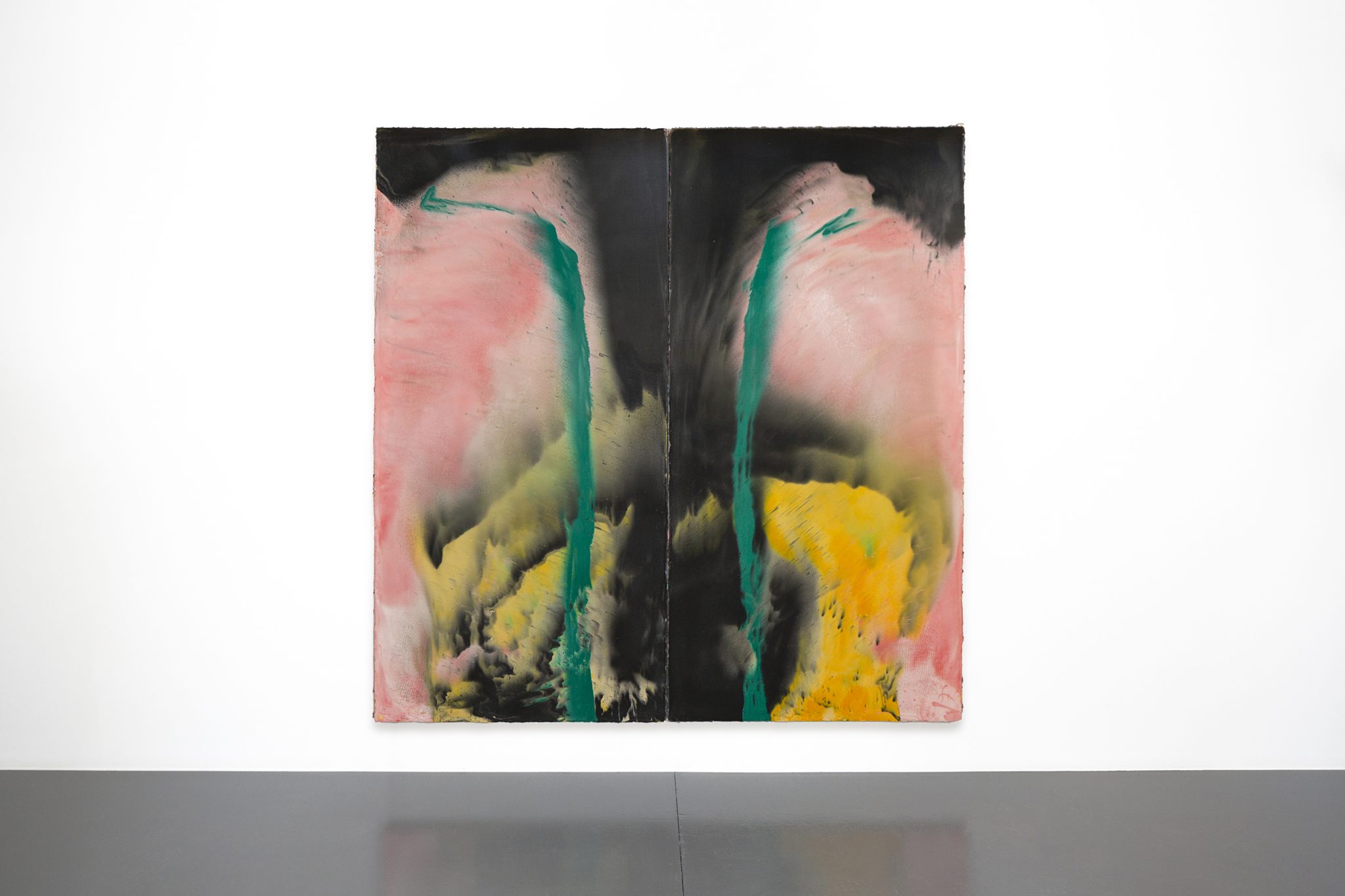“Everything that exists has existed as matter since forever, and will continue existing as matter forever”
Harminder Judge had almost given up making art. Five years of wrestling with being a performance artist had taken a physical and emotional toll when he stumbled across the material that would redirect his career. The unexpected turning point came in 2014, when the British artist purchased a derelict house on the edge of the Peak District, close to his hometown of Rotherham, South Yorkshire. Over the next three years Judge set about rebuilding the house himself (aided by the occasional YouTube tutorial), inadvertently amassing a wealth of material knowledge. In plastering, he experienced something like a revelation: a sculptural material that he could use like a painter. Its viscous physicality – together with repetitive, rhythmic application – offered, he found, a form of cathartic meditation.
Channelling the knowledge he’d accrued via building, Judge developed a highly technical artistic process. Mixing layers of pigment and wet plaster, he casts energetic abstract compositions that fuse the dynamism of lyrical abstraction with the spontaneous and improvisational gestures of Abstract Expressionism. The resulting works appear to erupt from a central fissure into nebulous forms that evoke both granular and planetary scales. Through their symmetrical alignment and strong meditative qualities, meanwhile, Judge also references elements of neo-tantric art, a movement conceived in India during the 1960s that combines ancient tantric diagrams – used to facilitate a union between the individual and the cosmos – with contemporary abstraction.
Following shows at Galerie PCP in Paris in 2021, Pace in New York in 2023 and, earlier this year, a dual exhibition across Matt’s Gallery and The Sunday Painter in London, Judge is now preparing for his first major institutional show, which opens in January at the Cleveland Museum of Art. Meanwhile, his current exhibition, Cliff and Cleft, at Gathering, Ibiza, presents a series of his cast-panel works alongside two sculptures. Untitled (rock risen cleft) (2024) is vertical and totemic, reminiscent of a giant body or tree; Untitled (rock risen cleft cliff) (2024), which covers a 7 × 5 m area of the gallery’s floorspace, is like a primordial slab of rock hewn from deep within the Earth’s crust. Judge’s wall-based works here, produced either as small-scale tablets or imposing diptychs, are exquisite feats of alchemy that transform everyday construction materials into something equally elemental. Their glossy, highly polished surfaces seething with colour and movement suggest a passage between liminal realms of consciousness, inviting viewers to access transcendental, cosmic energies.
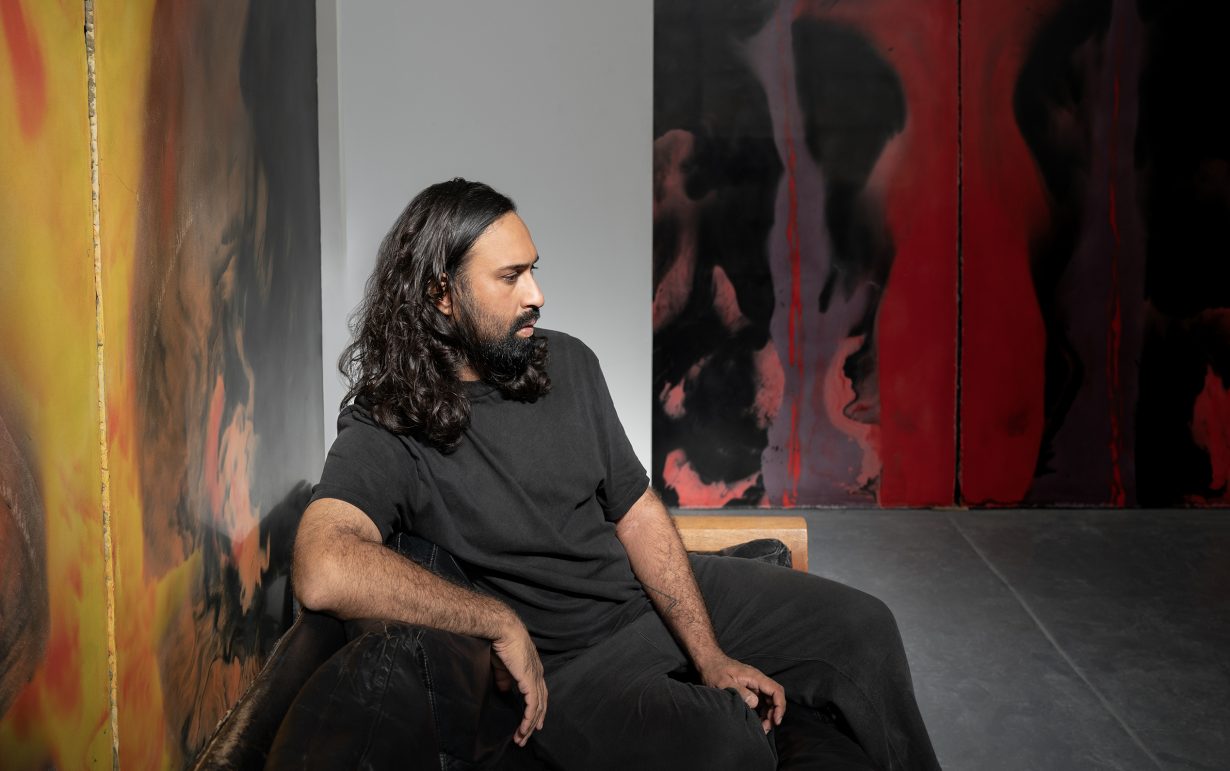
A Self-Sustaining Practice
ArtReview How did you develop the technical aspect of your work?
Harminder Judge I wanted a self-sustaining practice after leaving art school, having relied so heavily on the institution in the past [for funding]. So I only wanted to use my own tools, things I accumulated rebuilding the house: sanders, mixers, drills, big flexi-buckets, roofing sheets. I knew my limitations, not wanting to make things too unwieldy, so that I could work without anyone else or any expensive machinery. Within those parameters, I basically just messed around with plaster for a year and a half until these works arose out of studio play. And then eventually, things emerged that had a really strong aesthetic value; I could look at them and be quite entranced. The thing I love about neo-tantric works is that they’re not really paintings – they masquerade as paintings, but they’re actually more diagrammatic and schematic. They’re aids to meditation, you make one so you can look at it while you meditate. I talk a lot about portals; you don’t look at a work, you look through it, to think about meaning or the ineffable. So when that started to happen, I thought, ‘there might be a practice here’.
AR A work like Untitled (fluted opening) (2024), recalls the natural form of a waterfall or cyclone but still feels firmly rooted in abstraction. What’s the process for making your two-panel works?
HJ I start with a big, flat casting-surface of polypropylene plastic on top of a roofing sheet. I’ll build a clay wall around the edges, which stops the plaster just pouring everywhere, and then I mix buckets of plaster with polymer to give it strength, and cement pigments, which have a very high pigment content, to give it a really strong, saturated colour. Sometimes I’ll make separate buckets of pigments that are ready to go. I’ll mix in some retarder which buys me about 40 minutes, and pour all of those buckets into what are essentially massive moulds. I then lift those moulds, move them, jerk them around, and everything I do on one panel, I immediately mirror on the other to achieve some sort of symmetry. After that first layer sets, I add consecutive layers of scrim and plaster to give it strength. Once they’re fully dry, I can put the panels together to see what kind of compositional harmony has been achieved out of this chaotic process. When they really work, they tell me. When they don’t, I break the plaster down, put it into a big pestle and mortar, smash it into aggregate and then throw that into the next work. All the little specks and dots are several failed works making their way into a new one. So it’s cyclical.
When they’re sanded and polished, that surface almost disappears and suddenly they become slightly less tangible as objects; they start to become portals. So as soon as you can look into them, you’re drawn into them. Painting, as it’s understood by the majority of people, is the application of something onto something else, whereas these are really much more like sculptures. Everything is contained within the material itself.

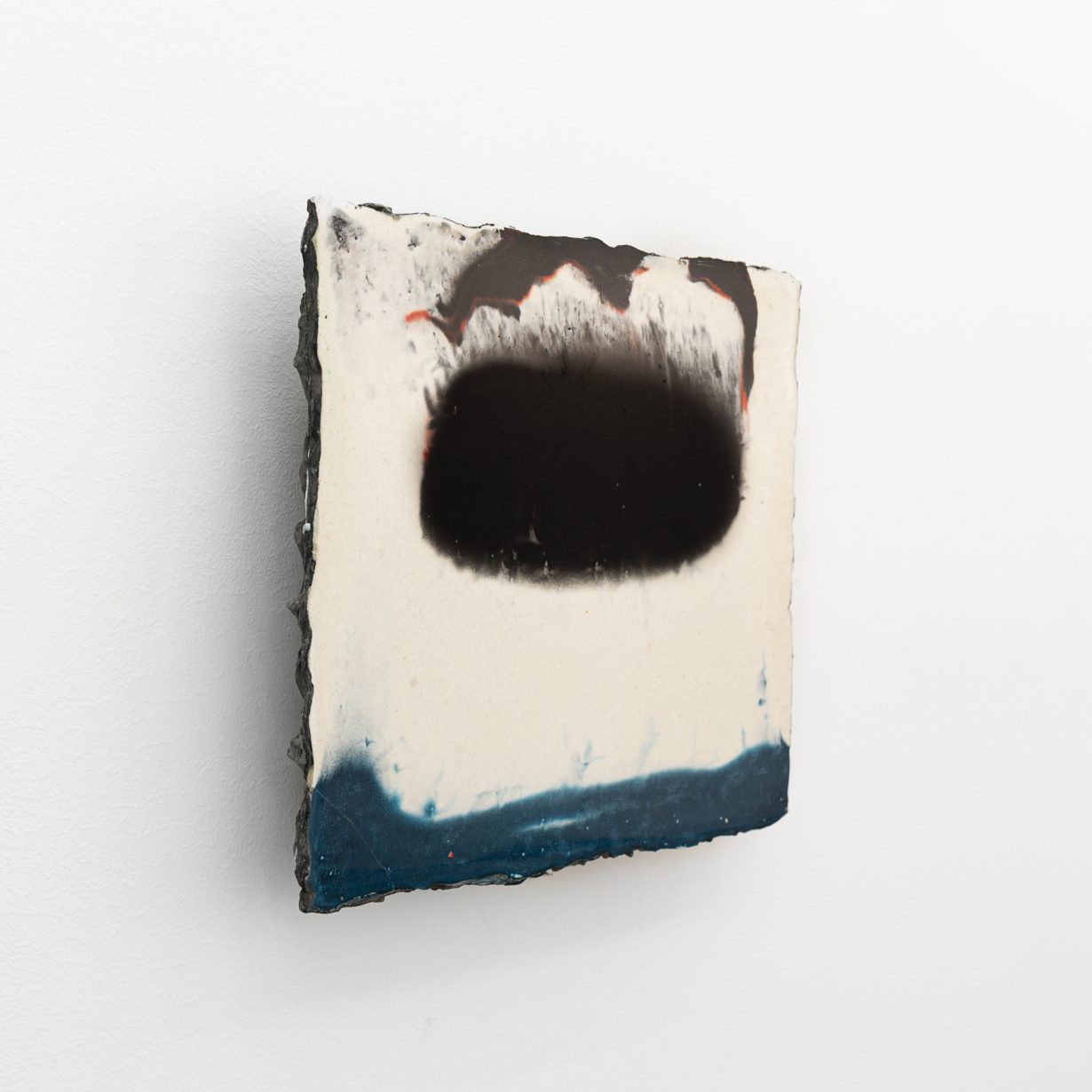
Psychedelic Funeral
AR Clearly, this is a process that embraces chance and uncertainty. Is there any part of it that’s planned? And if so, do those plans come from emotion or memory?
HJ Some things are very planned, in the sense that the things I’m thinking about tend to underpin my entire practice. One of the defining moments of my life was taking part in my great uncle’s funeral in India when I was fourteen. I travelled to a small village in Punjab where a lot of my family still live, and we collected my granddad’s body from a morgue and took him back in a taxi with us. I was holding his legs, which I remember being a strange relief against the stifling heat outside because he was so frozen. We stripped his body, washed him, combed his hair, dressed him in his best clothes and tied his turban. Then we carried his body around the village so that everyone who knew him could see him, and then to our family’s farm, where we built a funeral pyre. My dad and I tended his body throughout the night, which was one of the most psychedelic, trippy, incredible experiences I’ve ever had underneath the night sky. In the morning, we collected his ashes, his bone fragments, jewellery and teeth. So when I talk about ideas of material becoming immaterial, I’m essentially talking about that. Conceptually, that’s what underpins not only my work but how I see the universe: the fact that everything that exists has existed as matter since forever, and will continue existing as matter forever. But because I work with plaster, I have to work very quickly, in quite an intuitive, fast-paced, emotional way. So it’s quite childlike, quite naive and playful. The forms you see in the panel works come from agitating the material while it’s on the surface, and I can only approximate through movement what I’m trying to achieve in my head, so I have to feel my way there.
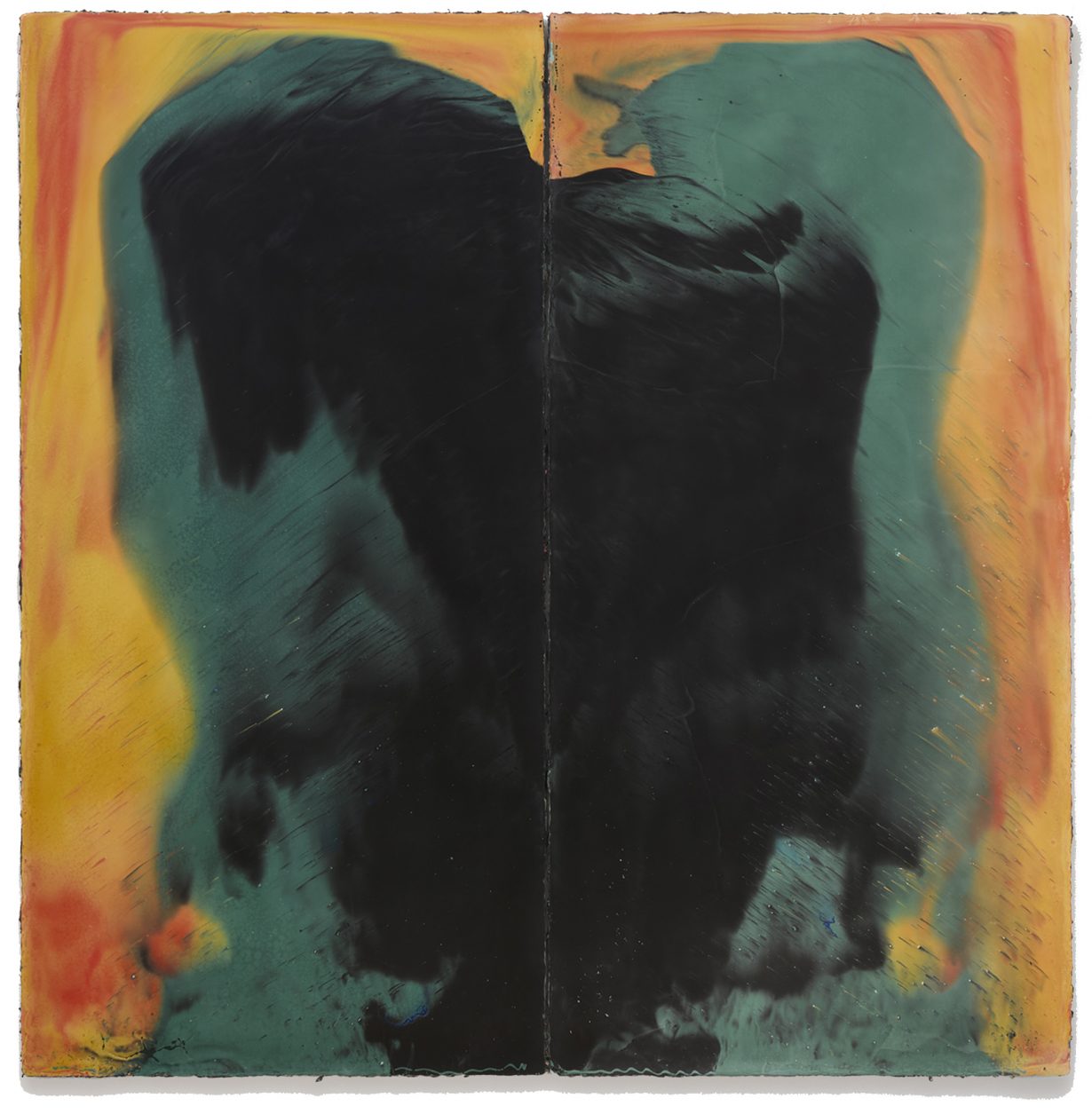
The Interesting Thing About Sculpture
AR Do you conceive of the panel works as two-dimensional surfaces, or, because of their depth and multiple layers of material, as three-dimensional objects?
HJ I definitely think about them as three-dimensional objects. I think about all the depth in that plaster and colour. That’s why I was so eager to start making sculpture. I found it really hard for two, three years, but the interesting thing about the sculptures is that they’re made from exactly the same material as the wall works and yet they project themselves in a very different way, and I think that’s really alchemical.
AR There’s a big contrast in scale in this show, as there was at your two-site exhibition at Matt’s Gallery and The Sunday Painter earlier this year. You spoke about the slightly frantic adrenaline that accompanies the making of the larger works due to the concrete’s setting time – do the smaller works feel like you’re using a different set of muscles?
HJ I think a lot about the micro/macro, it’s in all my work, really. When I was collecting those ashes, I wasn’t only thinking about how that body had been shrunk down into this handful of material, but about how those materials are essentially particles that make up absolutely everything, the grand and the minuscule. And I think when the work is successful, the larger works can feel all-encompassing, or very small in terms of their composition, and the small works can look massive. You’re not sure if you’re looking at an enormous event or a cell in a body. It can slip between scales. There’s a nice performance element about scale that can either pull the viewer closer or push them further away.
AR The sculpture you’ve made for this show feels like an extension of A ghost dance (lifted out), (2024), which you presented at Matt’s Gallery and which resembled a tree-stump or elephant’s leg. Untitled (rock risen cleft) feels equally totemic and anthropomorphic – is it a continuation of the same thread?
HJ That’s only my third sculpture, so it’s a very early thread. But I’m enjoying thinking a bit more about their form and the physicality because I have a bit more control over them, they have less of the chaotic element that the panel works have. I’ve been thinking about their shape, because the shapes in really good abstraction or tantric painting always have some reference to the body. And in the neo-tantric works, those abstract forms are nearly always the deconstructed body in the cosmos. So with the sculptures, I’m thinking a lot about the forms that are in the wall-hung works.
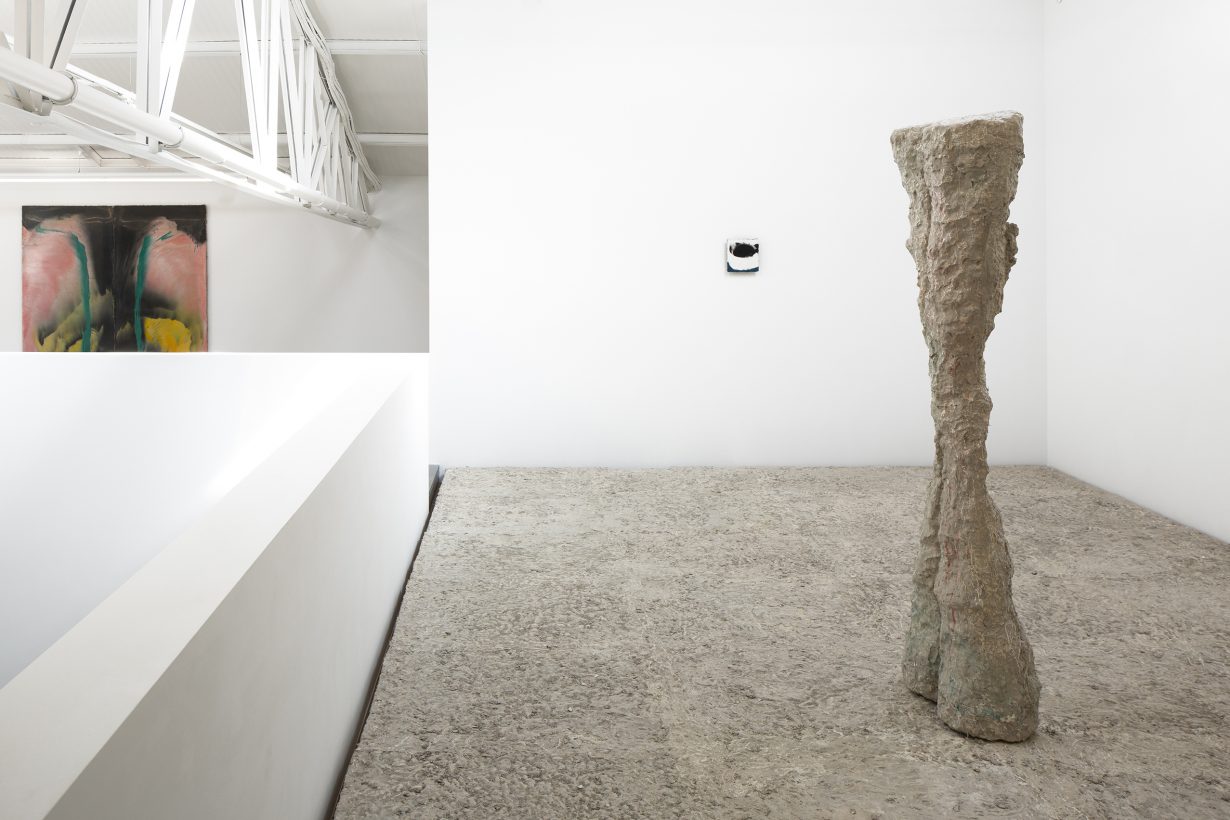
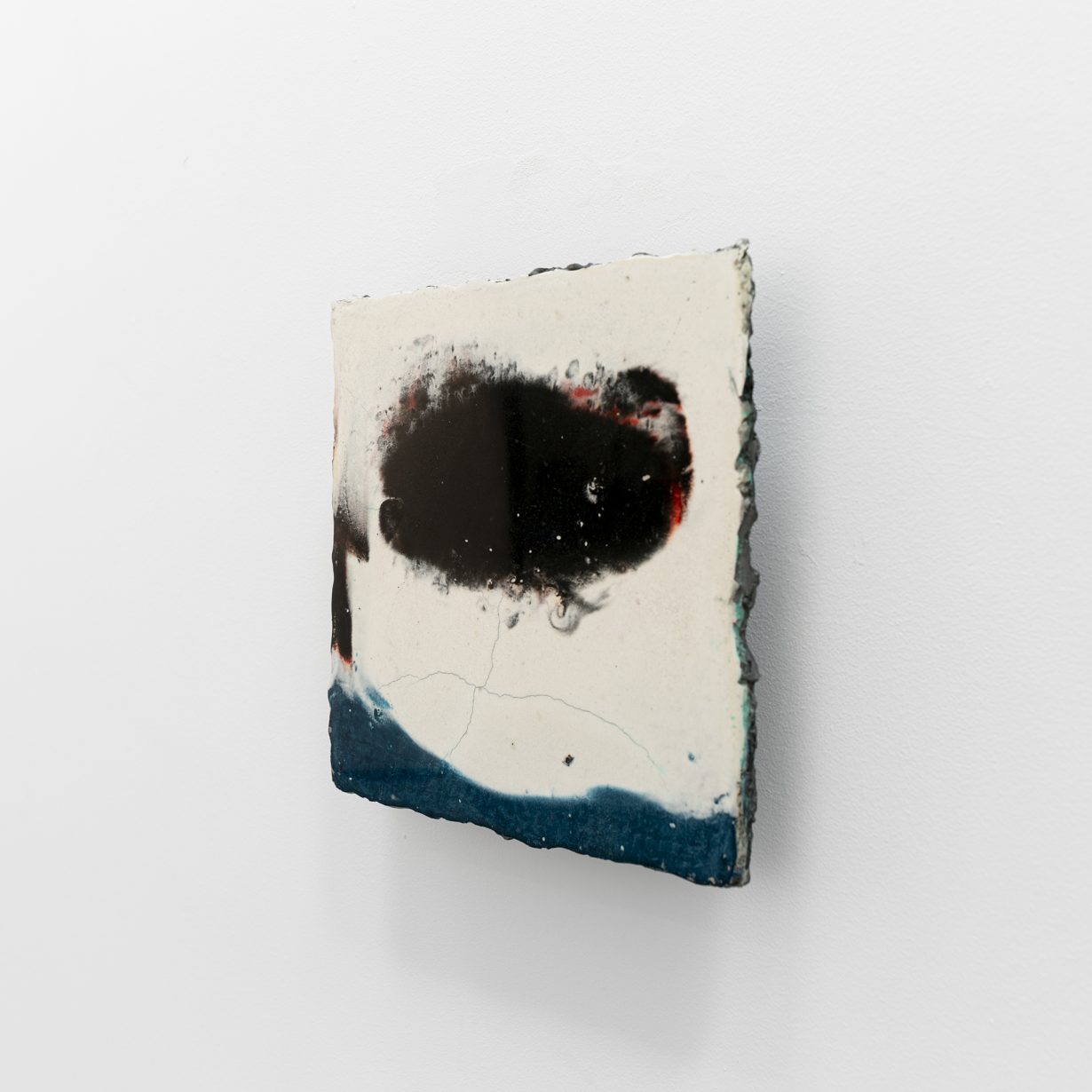
AR Tantric art represents a vast iconographic lexicon, but I was interested to hear more about your personal relationship to it as a British Sikh and how it shapes your work.
HJ I’m not necessarily someone who has a tantric practice, but what I really enjoy about tantra is that it’s huge and sprawling and nebulous and tricky to define. What’s interesting about it is that it’s always based within your body – this idea of the divine feminine and masculine residing in everybody and everything and that duality within it, dividing the world into two halves of the same thing. And then, of course, I love the neo-tantric painters. I think that’s some of the best painting that’s ever been made, but I find an equal amount of spiritual and aesthetic fulfilment in the work of Agnes Pelton as I do in that by Mark Rothko. I don’t see a huge divide between them.
AR Your work embraces spirituality as well as tantric traditions. I read you talking about how these alternative belief systems can offer a counterpoint to conservative, reactionary politics. Could you expand on what you meant?
HJ I think that’s why a lot of creative beings are returning to alternative bodies of knowledge, because there’s rebellion in tantra and witchcraft that is somehow counter to what happens when deeply divisive populist ideas take hold. When I was first making art, it was difficult to address this stuff. The artworld was in a very different place, people didn’t really want to talk about the soul or love or spirituality. But because the world is kind of fucked at the moment and people are sick of it, artists have come back to it in a big way.
Cliff and Cleft is on view at Gathering, Ibiza, through 22 December
From the November 2024 issue of ArtReview – get your copy.
